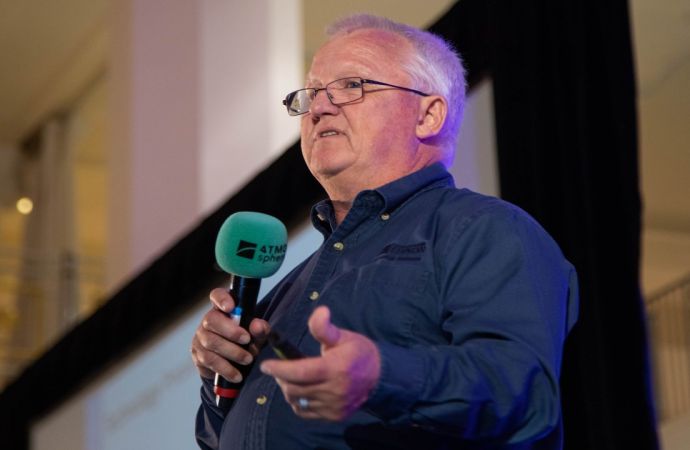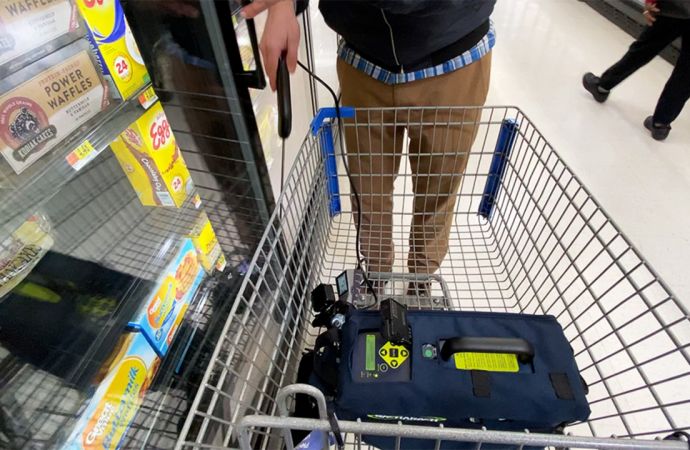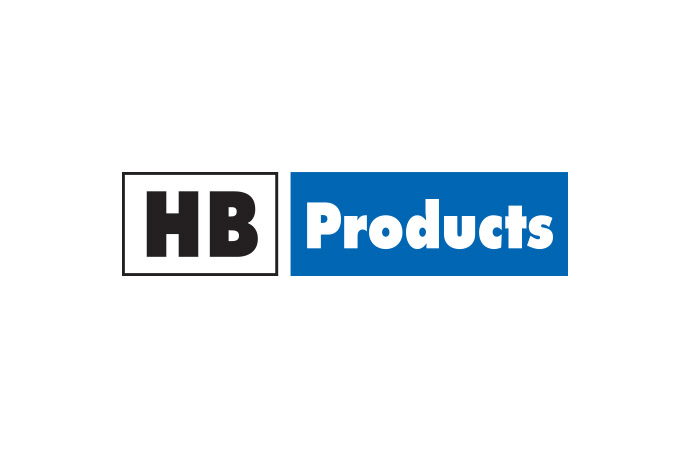A webinar organised by the US EPA Greenchill Partnership discussed the new provisions and changes that the EPA is proposing to the existing 1995 regulations addressing refrigerant leak repairs and how this might impact supermarket commercial refrigeration. The proposal for example lowers the leak repair trigger rate from 35% to 20%

On 15 December 2010, the US Environmental Protection Agency (EPA) came forward with proposed amendments to the federal §608 Leak Repair Regulations. One day after the release of the proposal, Julius Banks, Team Lead for Refrigeration at the Stratosphere Protection Division at the EPA and author of the proposed amendments took participants to the Greenchill webinar through the proposal.
Banks noted that the proposals, that have been years in the making, aim to use §608 to further reduce the use and emissions of ozone depleting substances. In this case the rule amends existing regulations that have been in place since 1995 and that deal with large commercial systems that have 50 or more pounds of ozone depleting refrigerant such as R22. However, the existing rule as well as the proposed one do not address non-ozone depleting alternatives that have been found acceptable under SNAP, like R404A.
Nonetheless, Banks clarified that the venting prohibition remains always in effect. Even if the EPA were to never write a regulation addressing the release of HFCs during service, repair and disposal, an intentional release remains illegal.
For commercial supermarket systems the proposal:
Q&A
The presentation triggered several questions from the webinar participants:
Q: When using the rolling average leak calculation, can you exclude the amount of refrigerant added for refrigerant conversions or system additions?
A: It is not intended to especially for a conversion that is triggered by a leak and this is exactly the type of comments that the EPA is seeking. Addition of capacity is not specifically addressed in the proposed rule, so again this is a good comment to send to EPA.
Q: Clarity on line purging that is required to prevent the introduction of non-condensables into a system. The current practice in commercial refrigeration requires line purging and this goes against the letter of the law.
A: There is a section in the preamble on purging. There is currently an exemption in the regulation for purging saying that those will not count against the leak rate if the equipment makes use of a purge collection device. If additional clarifications are needed these should be sent as comments.
Q: Clarify the rule on follow-up verification
A: One needs to do an initial verification immediately after the repair is done. A proposed “follow-up” verification will require a second verification to be performed after the system has operated under normal operating conditions for at least 24 hours. The EPA is not dictating, however, any specific type of verification.
Q: Are natural disasters (lightning strike) considered differently?
A: No special provisions for such events.
Q: If no refrigerant is added or removed but the components are changed or inspected must record on this be maintained in the documentation?
A: All record requirements in this regulation are contingent on addition of refrigerant that is an ozone depleter, so if you are not involved with the addition of refrigerant this part of the regulation does not apply but other portions of the regulation would apply. It could be that you need to use for example EPA certified technicians or EPA certified equipment to prevent leakages during inspection of components.
Q: Why does the EPA believe that the follow-up verification would not require a service call? An extra trip of a technician after 24 hours could involve a 30% increase of service costs, while it could mean increased store personnel costs in the case one has to empty and refill the shelves in-store. There is a value in verifying in normal operating conditions, they do it soon after the system has started operating in normal pressures etc.
A: The EPA is not dictating that the technician is someone that is not an employee of your own organisation or that it has to be a contractor. We have also estimated the amount of public burden that this would involve and the EPA welcomes comments on this issue.
Q: Clarification on 3)strike rule. How does this pertain to large systems? For example would the regulation capture the case of a large component such as an evaporative condenser that leaks in 3 different spots?
A: A component of your system that has 3 leak events in a 12 month period would need to be replaced. Therefore, the mentioned example would be captured by the regulation.
Next steps
EPA is accepting comments from the public, until 14 February 2011. All comments will be addressed either directly in the final rule or in an accompanying response to comments document. However, the timeframe as of when the rule will be finalised is not currently known.
Banks noted that the proposals, that have been years in the making, aim to use §608 to further reduce the use and emissions of ozone depleting substances. In this case the rule amends existing regulations that have been in place since 1995 and that deal with large commercial systems that have 50 or more pounds of ozone depleting refrigerant such as R22. However, the existing rule as well as the proposed one do not address non-ozone depleting alternatives that have been found acceptable under SNAP, like R404A.
Nonetheless, Banks clarified that the venting prohibition remains always in effect. Even if the EPA were to never write a regulation addressing the release of HFCs during service, repair and disposal, an intentional release remains illegal.
For commercial supermarket systems the proposal:
- Lowers the leak repair trigger rate from 35% to 20%
- Requires the verification and documentation of all repairs
- Allows all appliance owners/operators additional time to complete repairs due to unavailability of components: The requirement to retrofit or retire appliances that cannot be sufficiently repaired is not new, but what is new is that the EPA is proposing to change the timeframes under which this can be done, allowing for some flexibility for the owners of this equipment in cases when some components are not available. The EPA is proposing the freeze of timeframes (30 day clock for repair) until the parts arrive, but that has to be documented from the parts vendor.
- Mandates replacement of appliance components that have a history of failures: The “worst leaker provision” allows 3 strikes for any major component (such as a heat exchanger, a compressor, a valve etc) that has failed in a consecutive 12 month period. If the component continues to fail the EPA is proposing that it be permanently removed.
- Mandates recordkeeping on the fate of refrigerant that is recovered from but not returned to appliances during service: if for example someone operates stores with R22 that are being converted and they decide to recover the R22 and keep it onsite for use in other stores, there will be a requirement to keep a record of the type and the amount of the refrigerant, as well as where it goes. Similarly, a contractor taking the refrigerant with them will be required to document where the refrigerant is, where they received it from and where it is going.
- Introduces new definitions in the rule for clarity reasons (e.g. on seasonal variance, leak rate calculation etc). For the case of the leak rate calculation the current regulation allows the use of 2 different methods to determine the leak rate. The proposed rule eliminates the annualised method and keeps only the true rolling average over a consecutive 12 month period calculation method.
- Exempts the addition of refrigerant due to “seasonal variances” from the existing leak repair requirements (contingent upon recordkeeping): if you need to add refrigerant to account for change in ambient conditions, the proposal allows you to do that if you would later have a subtraction or recovery of an equal amount of refrigerant and it is documented.
- Decreases the amount of time allowed for the completion of retrofit/retirement plans from 12 to 6 months: Under the current regulation if you choose not to repair but to convert or retrofit a store you would have 12 months to do so. The proposal halves this to 6 months. The EPA has never been in favour of converting systems that are tight or converting stores without first repairing, as many of the alternatives have a high global warming potential. EPA is not in favour of any conversion out of and ozone depleting substance to an HFC or HFC blend without repairing first – that is not a good environmental story.
- Requires a follow up verification after the system has returned to normal conditions in addition to the already required initial verification: The proposed follow-up verification would need to be carried out no sooner than 24 hours and no later than 30 days after repair. Banks clarified that the EPA is not mandating an additional service call for the follow-up verification or any particular type of verification. The proposal says that a verification has to be performed and documented (not reported to the EPA). It is left up to the equipment owner to decide who performs it - as long as it is an EPA certified technician - as well as the method they use.
Q&A
The presentation triggered several questions from the webinar participants:
Q: When using the rolling average leak calculation, can you exclude the amount of refrigerant added for refrigerant conversions or system additions?
A: It is not intended to especially for a conversion that is triggered by a leak and this is exactly the type of comments that the EPA is seeking. Addition of capacity is not specifically addressed in the proposed rule, so again this is a good comment to send to EPA.
Q: Clarity on line purging that is required to prevent the introduction of non-condensables into a system. The current practice in commercial refrigeration requires line purging and this goes against the letter of the law.
A: There is a section in the preamble on purging. There is currently an exemption in the regulation for purging saying that those will not count against the leak rate if the equipment makes use of a purge collection device. If additional clarifications are needed these should be sent as comments.
Q: Clarify the rule on follow-up verification
A: One needs to do an initial verification immediately after the repair is done. A proposed “follow-up” verification will require a second verification to be performed after the system has operated under normal operating conditions for at least 24 hours. The EPA is not dictating, however, any specific type of verification.
Q: Are natural disasters (lightning strike) considered differently?
A: No special provisions for such events.
Q: If no refrigerant is added or removed but the components are changed or inspected must record on this be maintained in the documentation?
A: All record requirements in this regulation are contingent on addition of refrigerant that is an ozone depleter, so if you are not involved with the addition of refrigerant this part of the regulation does not apply but other portions of the regulation would apply. It could be that you need to use for example EPA certified technicians or EPA certified equipment to prevent leakages during inspection of components.
Q: Why does the EPA believe that the follow-up verification would not require a service call? An extra trip of a technician after 24 hours could involve a 30% increase of service costs, while it could mean increased store personnel costs in the case one has to empty and refill the shelves in-store. There is a value in verifying in normal operating conditions, they do it soon after the system has started operating in normal pressures etc.
A: The EPA is not dictating that the technician is someone that is not an employee of your own organisation or that it has to be a contractor. We have also estimated the amount of public burden that this would involve and the EPA welcomes comments on this issue.
Q: Clarification on 3)strike rule. How does this pertain to large systems? For example would the regulation capture the case of a large component such as an evaporative condenser that leaks in 3 different spots?
A: A component of your system that has 3 leak events in a 12 month period would need to be replaced. Therefore, the mentioned example would be captured by the regulation.
Next steps
EPA is accepting comments from the public, until 14 February 2011. All comments will be addressed either directly in the final rule or in an accompanying response to comments document. However, the timeframe as of when the rule will be finalised is not currently known.
MORE INFORMATION
Related stories




















